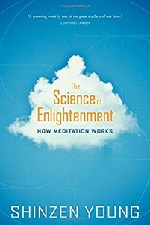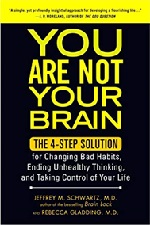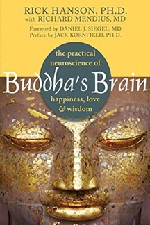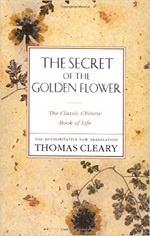|
TRANSLATE THIS ARTICLE
Integral World: Exploring Theories of Everything
An independent forum for a critical discussion of the integral philosophy of Ken Wilber
 Barclay Powers is an author and futurist filmmaker. He earned
his Bachelor of Arts in East Asian Studies from Columbia University
and has an extensive background as an independent scholar. He has
studied Chinese, Tibetan and Indian meditation, yoga and martial arts
traditions for more than 30 years. Powers is currently releasing
multiple media projects worldwide in film and print, related to the
evolution of consciousness based on his studies with numerous
masters of ancient wisdom traditions. His most recent film, The Lost
Secret of Immortality, based on his book, won best
spiritual/religious/Christian film at the Great Lakes International Film
Festival, 2012, the Silver Palm Award at the Mexico International Film
Festival, 2012 and best spiritual documentary at the New York
International Film Festival, 2011. See his website at
www.lostsecretofimmortality.com for information on the book,
graphic novel and film. Barclay Powers is an author and futurist filmmaker. He earned
his Bachelor of Arts in East Asian Studies from Columbia University
and has an extensive background as an independent scholar. He has
studied Chinese, Tibetan and Indian meditation, yoga and martial arts
traditions for more than 30 years. Powers is currently releasing
multiple media projects worldwide in film and print, related to the
evolution of consciousness based on his studies with numerous
masters of ancient wisdom traditions. His most recent film, The Lost
Secret of Immortality, based on his book, won best
spiritual/religious/Christian film at the Great Lakes International Film
Festival, 2012, the Silver Palm Award at the Mexico International Film
Festival, 2012 and best spiritual documentary at the New York
International Film Festival, 2011. See his website at
www.lostsecretofimmortality.com for information on the book,
graphic novel and film.SEE MORE ESSAYS WRITTEN BY BARCLAY POWERS Post-materialist ScienceIs Everything Really Made of Consciousness?Barclay Powers
Consciousness may be the underlying fabric of the universe (or multiverse), when the non-physical matter of that which composes our world and our minds is understood correctly.
Recently I read a fascinating autobiography by a University of Oregon neuroscientist, Marjorie Woollacott, called Infinite Awareness. She has a 40-year background in meditation and describes in great detail her journey from the materialism of neuroscience and her many doubting colleagues to her embrace of a “spiritual” post-materialist worldview based on her personal experiences of “energy” in meditation and, crucially, her initiation or shaktipat with a peacock feather from her initial teacher, an Indian swami. In direct contrast with Shinzen Young, the highly regarded meditation teacher and author of The Science of Enlightenment, she is able to handle subjects like kundalini, chi / ki, prana and chakras. Young, on the other hand, does not understand these matters and their essential role in returning to the Source, the Original Mind. Mindfulness, as conceived and taught in popular Western culture, ignores the key concept that enlightenment is within the body, not just in the mind / brain. 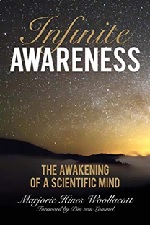
Woollacott describes herself as a renegade post-materialist who now embraces the ideas in the Open Science Manifesto. This is a remarkable place to end up after a long and traditional career as a neuroscientist and her honest appraisal of the process that got her there is refreshing in the rapidly evolving world of neuroscience. Adherents of Open Science include many scientists that have clearly had strong personal experiences that they don't believe can be explained by standard scientific models. To a large degree, transpersonal psychology, the study of “higher states” of consciousness, is a founding discipline of Open Science which may be on its way to becoming a more highly evolved and more inclusive version of science and standard materialism in the 21st Century. Along with the neuroscientist Mario Beauregard, the physicist Henry Stapp and the psychiatrist Jeffrey Schwartz, Woollacott is an example of a scientist who does not believe that the brain creates consciousness like a machine, which is the standard scientific belief. Instead, because the mind has demonstrated the ability to change the physiological structure of the brain in numerous studies of meditation, she believes that consciousness may be the underlying fabric of the universe (or multiverse), when the non-physical matter of that which composes our world and our minds is understood correctly. One of the core ideas of Open Science is that the “hard problem” of conventional science is consciousness, and if the mind, as in meditation, can change the physical structures of the brain, the conventional model of consciousness as a by product of material brain function is inadequate.
The example of a television is often cited by post-materialist scientists. Although a damaged television set may produce impaired or distorted images this does not mean that the signals or programs are created within the machine itself, its “brain.” Rather, they are broadcast from another location and the machine acts as a receiver. This is interesting because my friend told me that when her cat sees images of cats on television, curious as ever it looks behind the television set. Tibetan meditation masters sometimes also use this metaphor, saying that Buddhahood is like an individual going into a television studio and then appearing on all television sets simultaneously. This is called the multiplication and projection of emanation bodies. Woollacott has a specific purpose in her writing, which is to argue convincingly that everything is Shiva, or the consciousness of God in Indian traditions, using the work of a wide variety of well-respected Western researchers of transpersonal non-ordinary subjects like near death experiences (Pim van Lommel), reincarnation (Stevenson), and telepathy among others. She employs the whole range of subjects that the flagship Institute of Noetic Sciences specializes in researching. As a serious post-materialist scientist, she deals with many subjects based on her personal experiences, including Reiki healing, in a way that most conventional scientists would consciously avoid. She argues effectively for the importance of first-person, subjectively-observed science, saying that she has had so many personal experiences, as have her Open Science colleagues, that cannot be explained by conventional science that a new model of a universal field of consciousness that connects all the parts of the reality we inhabit is necessary. Her experiences and understanding of the kundalini and chi, for instance, are a valuable contribution from a neuroscientist since most of her colleagues avoid this key area of meditation research as it contradicts the established modern scientific worldview. 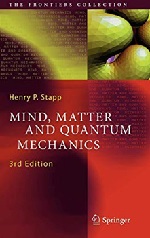
Woollacott's initial experience of the kundalini was very different than Gopi Krishna's well known experience; he called the kundalini the “evolutionary energy within man” and connected it with human genius. Her first experience started at the top of her head and worked downward, but only partially. The activation came from receiving shaktipat from her teacher at the crown chakra. Taoists also have a version of this energy transference through the top of the head which is called kai ding. The idea is that the genuine qigong master puts a message into the student's body which eventually results in the union of Yin and Yang energy bodies, or the Golden flower. There are both Buddhist and Taoist versions of this process. The famous channeled text, The Secret of the Golden Flower is an alchemical combination of Taoist and Buddhist meditation theory and practice. The Indian concept of a small gold sleeping serpent waiting to be awakened within the first chakra or starting point of the human body is a valid insight within the context of Indian medicine and kundalini yoga. Often the coccygeal glomus at the tip of the spine is called the kundalini gland by Indian authors. These experiences are based on the rewiring of the nervous system of the human body, and are connected with universal, global shamanic experiences of inner heat. 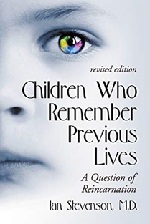
“In your backbone you feel a pointed something, and it works its way up. Then the base of your spine is tingling, tingling, tingling, tingling, tingling, tingling, tingling … And then it makes your thoughts nothing in your head.” “Burning currents of fire inside; cold shivers running outside, along the spine, wave after wave, over legs, arms, abdomen, making all the hair rise. It is as if the whole frame were full of electricity….Then it happened. It was as if something snapped inside my head, and the whole of me was streaming out ceaselessly, without diminishing, on and on. There was no “me” – just flowing. Just being. A feeling of unending expansion, just streaming forth.” It is important to know the level of meditation understanding of the author of a provocative text like Infinite Awareness. What has the author intentionally or unintentionally omitted, after 40 years of combining the oppositions of meditation and neuroscience orthodoxy? What have they not experienced, and most importantly what are they avoiding dealing with, or talking about? Are they using the scientific method in appraising their personal enlightening experiences? Most importantly, can they differentiate between their own psychological projections, real transpersonal non-ordinary phenomena, and spiritual stories that they have read or heard from theistic lineages? Woollacott does not mention, for example, that Shiva is often worshiped in the form of a lingam or phallus by yogic adepts. Since everything is Shiva, one can only wonder if Freud would still say sometimes a cigar is just a cigar. 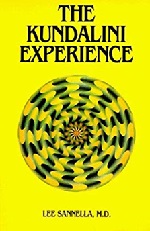
Woollacott is credible at all levels, which is one of the joys of reading her book, but ultimately the dots do not quite connect between her concept of awakening and her accumulation of spiritual experiences. (This bridge is of course different for everyone.) Nevertheless, her conviction that they eventually would connect was strong enough to result in her rejection of materialism and embrace of a consciousness-first perspective. However, Woollacott does not discuss the essential concept of the connection between the human reproductive system, meridians and enlightenment. The most important aspects of Taoist and Buddhist meditation in terms of the body, jing, chi and shen, and nadi, prana and bindu are not accurately discussed from the perspective of the completion stage of meditation in Chinese and Indian medical systems. Buddhist and Taoist models of awakening that emphasize the union of the three bodies, physical, subtle and super subtle, are also not discussed. The Taoist neidan concepts of the Golden Flower, or Embryo of Enlightenment, and the ancient Zen version, the Original Face, are similarly not part of her analysis of the fruit of meditation. The idea of shunya, zero, or emptiness, and non-self are also left out. Some of these deeper levels of East Asian meditation systems that she has not addressed will be valuable roads to go down for other post-materialist neuroscientists. 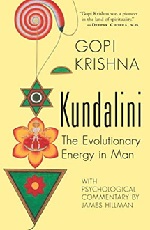
Her work is far better than that of most Western Buddhist meditation teachers and writers who have not successfully connected the physiological opening of the meridians with the return to Original Mind, which is the goal of East Asian meditation systems. This leaves them with a New Age psychological approach sadly lacking in genuine depth which often prevents students from healing physically and awakening in terms of both the body and the mind. The newest theory concerning the location of the meridians, and why they are absent from Western scientific models, is that they lie within the deep fascia of the body, and have been overlooked by Western medicine. Woollacott writes convincingly that the sensations she has felt of bliss in her brain, albeit subjectively, are not explainable by Western brain models because there are no known nerve receptors within the brain that could account for them. 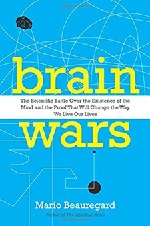
Especially notable in Infinite Awareness is the way she handles hypnosis and the many scientific studies which demonstrate its efficacy far beyond the placebo effect, a confounding subject to scientists which she also deals with in some detail. This is one of the most promising areas of research for post-materialist science; more than 20 percent of adults, and higher levels in children, can easily experience visual and auditory hallucinations by hypnosis, as well as radical healings. Hypnosis and self-hypnosis are the basis of psychology and psychiatry in many respects, including the discovery of the unconscious by Freud and his disciples in the form of post-hypnotic suggestion and its effects. It is astonishing that Western meditation professionals have not generally included this simple, functional technique for healing the body, studying the mind and deepening the altered state. Much of the New Age movement can be fundamentally traced to a mid-19th century hypnotist named Phineas Quimby, who recognized the connection between the mind and self-healing. Woollacott notes that hypnotic anesthesia during surgeries in the mid-1800s lowered the fatality rate from 50% to 5%. Hypnosis is actually one of the best scientifically verified examples of mind over matter that explains the Indian concept of maya or illusion, preventing moksha or liberation. However, in India it was understood as taking over the body of another, not merely suggestion. 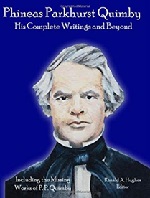
In addition to Woollacott, there has recently been a surge of books that seek to explain Buddhist meditation from a secular science-based perspective, with an emphasis on neuropsychology. Books like Buddha's Brain by Rick Hansen, or the Science of Enlightenment by Shinzen Young are attempts by long-term meditators to describe the benefits and goals of meditation practice from the perspective of experienced teachers and Western practitioners. These books demonstrate a growing, relatively new trend of scientists that meditate, consider themselves to be "spiritual," (a vague nonsensical word that can mean anything), and emphasize a mindfulness approach to cognitive stress reduction. Some of the authors like Young are considered to be “enlightened” by neuroscientists like David Vago, who works with the Dalai Lama. Doctors like Daniel Ingram and Andrew Newberg also have written books suggesting that they believe that they have achieved the goal of meditation – the legendary Enlightenment that the historical Buddha spoke of.
What all of these authors suggest is that enhancing perception by regular training of the mind has the potential to radically upgrade the normal function of the brain, greatly improving the quality of life and the creativity of the individual. Neuroscience has also noted that even brain trauma sometimes results in virtuoso, savant or genius abilities being triggered in the individual. This suggests that the brain has dormant capabilities that can be activated by a variety of methods that range from drugs, to meditation and even electromagnetic cranial stimulation. What is notable about many of the recent books about meditation by Western authors is what they leave out through a lack of understanding or purposefully omit discussing, as with Integral theory. Shinzen Young, for example, claims lineage transmission in Hinayana, Mahayana, and Vajrayana systems, with extensive practice in Asia and over 50 years of meditation experience. He is considered enlightened by scientists and takes a brain-based approach to mindfulness. Unfortunately, he is not able to successfully discuss the connection between chi/prana and genuine enlightenment (Buddhahood). Similarly, he struggles with the kundalini and Taoist meditation, demonstrating a misunderstanding of the actual mechanism of Buddhahood within the body, the Buddha Nature or Tathagatagarbha, the Embryo of Enlightenment. 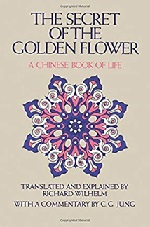
If one has achieved genuine alchemical awakening there should be no problem explaining the Golden Elixir or Sheng Tai of Taoist inner alchemy, or the hermetic version in the West, infans solaris, the homunculus / androgyne. His discussion of Shingon Vajrayana deity yoga is quite poor. He also seems to have no comprehension of the four key yogas of Tilopa which could arguably be considered to be the essence of Tantric Buddhism. These are tummo / kundalini, clear light, illusory body and karmamudra sexual yoga. There is no mention of the connection between nadi, prana, bindu and genuine Buddhahood expressed in the book. Nor is jing, chi and shen, the basis of Chinese meditation, and the Shaolin Chan/Zen tradition, or qigong accurately discussed which means that he has not understood the Original Mind nor actually seen his Original Face, but may have copied some of the authentic terminology. Taoist neidan meditation lineage holders referred to this kind of parroting as, “they have not seen their true mind and true body." The inability to explain the connection between sexual yoga practice, Shingon and Tantric Buddhahood puts The Science of Enlightenment, in the category of books by former Buddhist monks who become meditation teachers and scholars. These include Robert Thurman, B. Alan Wallace, Stephen Batchelor and many others who now teach and write books with the expertise of only partial knowledge. Inevitably, they can't explain Buddha Nature as the physiological seed of Buddhahood within the body. Young goes so far as to suggest that the Buddhist concept of impermanence, chi, and the Holy Spirit, Spiritus Sanctus, are the same, which is a remarkable example of confused New Age perennialism. 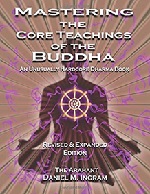
The recent discussion of “fake” versus “real” Integral/transpersonal psychology is not merely a question of authenticity or altitude as a lay audience would assume. The conversation reveals one of the central flaws of the distinctly Western progressive bias of non-lineage holders who insist that all romantic mysticism should lead to the top of the same theistic mountain. This is a mountain where sufficient meditation and guru yoga are believed to lead to a magical level of consciousness that sees God as love, consciousness as God, and everything, when seen with the true eye of Spirit, as Divine non-duality. Those that are not deemed capable of accepting, repeating and experiencing this absolute truth are considered to be spiritually/mentally deficient nonbelievers who have not reached a high enough level of meditation and realization. The belief is that if you follow a guru who has directly experienced this level of awakening, no matter what negative and morally questionable things that they do, you will transcend your ego and experience awakening for yourself. In other words, often a teacher's narcissistic personality disorder can be effectively transmitted to a student if the student is naive enough to accept the process of transference.
This is perhaps the central spiritual error of Integral theory.
This is perhaps the central spiritual error of Integral theory. To begin with, Buddhism and Taoism conflict with the theistic assumptions of Hindu yoga adepts and philosophers, as well as with Christian mysticism. The Hindu yogic sage cannot generally explain Buddhahood or immortality, the respective goals and methods of Buddhism and Taoism, or at least not in modern terms. Exceptions to this generalization would probably be some historical Mahasiddhas, which are in both Hindu and Buddhist lineages. 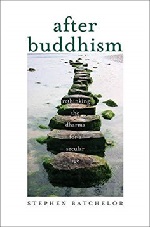
Some Indian Advaita Vedanta teachers go so far as to say that no Buddhist has ever achieved enlightenment because of the absence of God realization in their tradition. Unfortunately, this is really no different than a Christian with a sign, God Saves, on a street corner. Moreover, much of the Integral theistic focus is based on the fact that often the Western audience cannot distinguish between Buddhism, Taoism and Hinduism and the actual goals of these respective meditation and yoga systems. Theistic non-duality and non-theistic non-duality are not the same. Yet some Western psychologists are skilled in marketing a kind of spiritual narcissism as the goal of meditation and spiritual practice. The contradiction is that if the “eye of Spirit" reveals that torture, the murder rate, and war are merely the play of Divine consciousness, then these are at the same time identical to your true self. The gullibility of the well-meaning audience is extraordinary: to not see that this “everything is God's consciousness of love" is a false narrative designed for children in search of meaning, or is at least a distorted romantic overstatement on the part of the teacher. Describing the demonic as the shadow does not solve this essential problem. To his credit, Shinzen Young does discuss “the dark night of the soul” as enlightenment's “evil twin” in the form of a dissociative personality disorder caused by over meditation. Now let us examine the words spirit and spirituality. These are the essential vague terms that are used to convince an often confused audience that in modern times defines itself as “spiritual but not religious," often without realizing that the goal of Northern Buddhist or Taoist meditation is more down to earth, being both physiological and scientific. Buddhahood is empirically based when it is found to be the origin of human consciousness, as these traditions assert. It represents the newest, evolving paradigm of science, and is testable, though not directly in a neuroscience laboratory. It is too rare an event, has elements of subjectivity, yet anyone who has a legitimate lineage transmission and training method, like the Six Yogas of Naropa, can achieve it. An authentic tai chi chuan / qigong grandmaster generally has no problem with a clear Chinese medical explanation of enlightenment free of religious content. This is almost completely ignored by most Western researchers and psychologists. Tai chi chuan contradicts Integral theory in almost all respects when functionally mastered and understood, as does the Tao Te Ching. 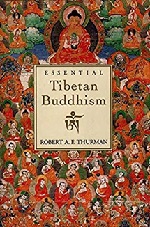
The words spirit or spiritual are soft terms which often lack their original meaning. But being standard language in modern times, they are necessarily and effectively used by New Age intellectuals to promote their books. Within Taoism, for example, the yuan shen or “original spirit” is another name for the Sheng Tai or spiritual/holy embryo. Buddhism calls this “golden doppelgänger,” the Buddha Nature or Tathagatagarbha, the Embryo of Buddhahood. It is this primordial structure of consciousness which can be defined as the actual mechanism of Buddhahood, which makes the union of the three bodies or Trikaya possible. Many Western translators use the term “womb of suchness" because they have not seen the actual Original Face consequent on realization for themselves, but write with certainty as if they have. In the Vedas and Hinduism, the Hiranyagarbha or Golden Embryo, is sometimes called the First Teacher of Yoga, and appears to be the origin of the Tathagatagarbha in Buddhism. Nor is it something instead of nothing. It dissolves into nothingness when swallowed by the adept in a dream or meditation vision. Early Chan/Zen sometimes called this “seeing the ancestor” (the relic of the Buddha), or embracing singularity. The Tibetan yogi Shabkar called it “seeing golden non-duality.” The ouroboros is probably the oldest symbolic pictorial depiction of the actual alchemical awakening experience.  One of the areas of greatest confusion among New Age intellectuals is the actual relationship, in terms of both theory and practice, between Chan/Zen on the one hand, and Taoist meditation and Chinese classical medicine on the other. Most American Zen masters belong to Japanese lineages and do not seem to be familiar with Chinese Shaolin Temple training methods. They focus instead on poetic, romantic versions which basically idealize the magic of the “present moment” as the secret of enlightenment. 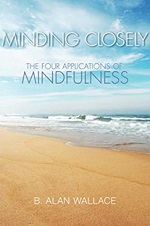
The problem here is that the Integral pre/post trans-rational psychological model is contradicted by Taoism, Chinese medicine and Zen theory. The Original Mind, which is both the goal and origin of Zen, is pre-rational and pre-verbal, the exact opposite of the divine ladder to the trans-rational Godhead of non-duality which the Integral map outlines. This is why, whenever you see confused Integral theorists talking about the Original Face, the Buddha Nature, Zen or the Way, it is poetic/romantic terminology which they have completely misconstrued by parroting the leader of the narcissistic cult. The fact that this is not viewed as obviously a contradictory error, mistranslation, and absence of genuine realization, but as some kind of theistic evolution, is astounding from a genuine scholar's perspective. This New Age perennialism prevents realization of the actual union of pre-birth and post-birth consciousness which is the goal of Zen and Taoist meditation practice. Pre-birth or pre-celestial means before time. Once again, the location of enlightenment, pre-rational, pre-birth, pre-verbal consciousness has been changed to fit an artificial Integral map of the evolution of consciousness. The infant is the key metaphor of enlightenment in the Tao Te Ching, as well as the symbol of whole, complete, awakened original consciousness in Taoist meditation. When neidan meditation is mastered it clearly reveals that Lao Tsu was a successful alchemist who had returned to the Source. Pre-birth or pre-rational consciousness has been the gold standard of realization in China for thousands of years. It is also the healing mechanism in the body according to Chinese medicine, which considers the body to be the model of enlightenment. Once it is understood that the pre-birth, pre-rational consciousness is the Buddha Nature in the form of the Embryo of Enlightenment or Sheng Tai, the Integral spiritual map can be seen to be a distortion of many meditation systems and their origins and true goal in Asia. This prevents the audience from understanding the real meridian-based awakening process and demonstrates the absence of actual lineage transmission and genuine realization of the Tao. The idea of the pre-birth or pre-natal consciousness being a natural or original state of primordial enlightenment present in consciousness has eluded the vast majority of Western researchers. It is this essential truth, the Dharmakaya truth body, which may be the illuminated future of Western contemplative neuroscience. 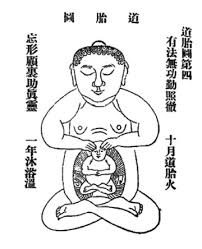 |
